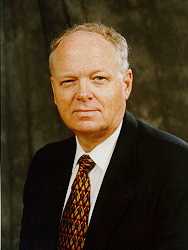|
Performance Practice For more information about Dr. Anderson, visit his faculty web site. Or you may contact him via email. |
Introduction
Renaissance
Baroque
Classical
Romantic
Invention of Printing Press c. 1450
Basic Assumptions
-
Not only one way to perform music of this period; much freedom is allowed.
-
Little or no distinction is found between instrumental and vocal styles; they are usually interchangeable.
-
Need considerable knowledge of style, original instruments, etc.
-
Involves use of new forms and timbres.
Vocal Quality & Choral Singing
-
Average choir consisted of boy sopranos, male altos with tenor & bass; had from 3 to 5 on a part with the boy soprano part doubled.
-
Vibrato was considered an ornament (can be used today if natural and with no hint of exaggeration).
-
Male "castrati" used - now a lost timbre.
-
Sacred music was choral oriented, but secular music was usually performed one to a part with various possibilities of instrumental substitution or doubling.
Problems of Notation
-
Dynamics are rarely indicated, phrasing never!
-
Musica ficta
a. Used to raise leading tone at cadential points; used to avoid dim. 5ths (aug. 4ths) harmonically and melodically.
b. "Secret Chromatic Art in the Netherlands Motet" (Edward Lowinsky) -
Pitch was not standardized; varied greatly from church organ to church organ (one should feel free to change pitch up or down to better suit the voices you have)
Ornamentation & Improvisation
-
More common in secular compositions than the sacred; i.e., music with one on a part.
-
Chiefly at cadences and on sustained notes.
-
Appropriate for voices and instruments.
-
Should occur in only one voice part at a time; most common in soprano part, but possible in all parts.
-
More appropriate toward end of piece than at the beginning.
Tempo
-
Indicated by notational signs that suggest absolute durations rather than through tempo terms.
-
Governed by unit of time called "tactus."
a. Has 2 parts, each equal (thus not one strong and one weak!).
b. Determined to be speed of heart beat or moderate walk; i.e., M.M. = 60-80.
c. Conducted as up and down pattern, often heard audibly! In triple meter the down was twice as long as the up.
d. Tempo changes done through proportional changes: i.e., o = o. suggests a ratio of 2 to 3; thus three notes are to be performed in the time of the previous two.
Expression
-
Must use text as point of departure; find word stresses.
-
Try to forget bar lines as determiners of stress.
-
Phrase shape is dictated by movement to and from stress points; thus will likely not be a smooth arching curve, but will rather contain irregular arching phrases.
-
Dynamic fluctuations should be limited to one degree within phrases though greater freedom may be used between major sectional divisions if warranted by the text. Extremes should be avoided.
-
As the tension relaxes at cadence points, there should also be a softening of the dynamic.
| If you would like to be added to the TSMP Email Mailing List and receive periodic notifications of new articles and updates to this website, then please email TSMP.
The Texas School Music
Project is a source for ideas and information
concerning pedagogical
practices in the music classroom or rehearsal hall. The TSMP is a service provided to
all music specialists by the faculty
of
the Department of Music
at Stephen F. Austin State University. Copyright ? 2002, Department of Music at Stephen F. Austin State University |
